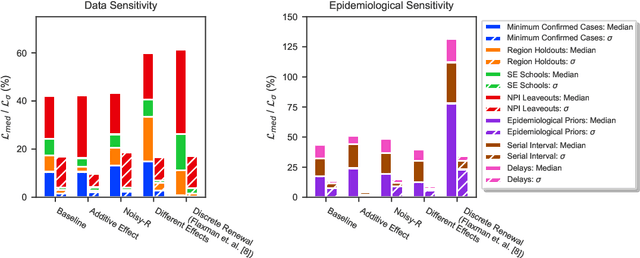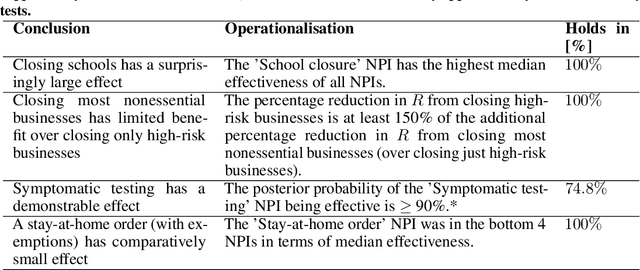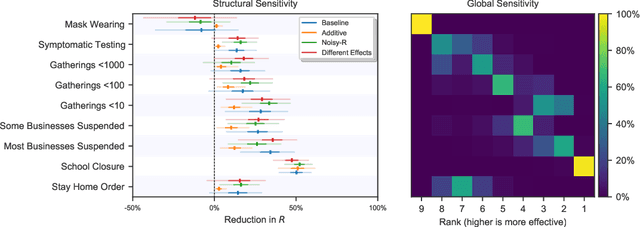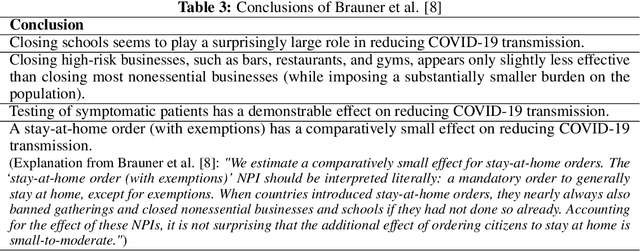On the robustness of effectiveness estimation of nonpharmaceutical interventions against COVID-19 transmission
Paper and Code
Jul 27, 2020



There remains much uncertainty about the relative effectiveness of different nonpharmaceutical interventions (NPIs) against COVID-19 transmission. Several studies attempt to infer NPI effectiveness with cross-country, data-driven modelling, by linking from NPI implementation dates to the observed timeline of cases and deaths in a country. These models make many assumptions. Previous work sometimes tests the sensitivity to variations in explicit epidemiological model parameters, but rarely analyses the sensitivity to the assumptions that are made by the choice the of model structure (structural sensitivity analysis). Such analysis would ensure that the inferences made are consistent under plausible alternative assumptions. Without it, NPI effectiveness estimates cannot be used to guide policy. We investigate four model structures similar to a recent state-of-the-art Bayesian hierarchical model. We find that the models differ considerably in the robustness of their NPI effectiveness estimates to changes in epidemiological parameters and the data. Considering only the models that have good robustness, we find that results and policy-relevant conclusions are remarkably consistent across the structurally different models. We further investigate the common assumptions that the effect of an NPI is independent of the country, the time, and other active NPIs. We mathematically show how to interpret effectiveness estimates when these assumptions are violated.
 Add to Chrome
Add to Chrome Add to Firefox
Add to Firefox Add to Edge
Add to Edge